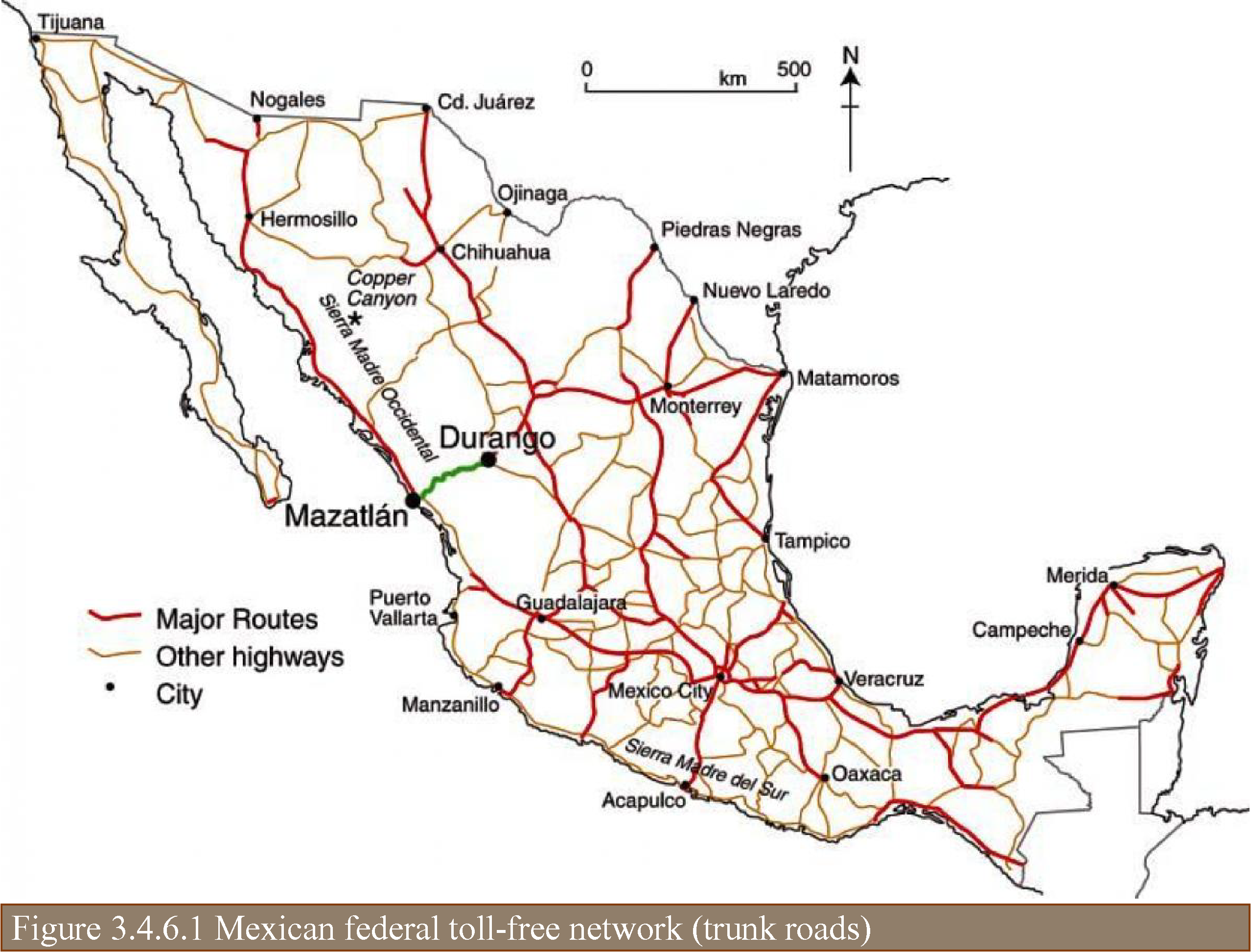
Asset Management Manual
A guide for practitioners!

Asset Management Manual
A guide for practitioners!
One of the major components of Mexican roads is the federal toll-free network, which comprises 40,752 km of paved roads (Figure 3.4.6.1) and 7,483 bridges.

This part of the network is managed by the General Directorate of Road Maintenance (DGCC) of the Mexican Secretariat of Communications and Transport (SCT).
As part of the planning process implemented by the federal government for developing and preserving the federal roads, the DGCC prepares, on the one hand, a six-year plan for each period of the federal administration and, on the other hand, an annual road maintenance program. Both the six-year plan and the annual program are composed of a series of asset-specific subprograms, including pavement maintenance, bridge reconstruction, and black spot treatment.
The programming process for pavement maintenance is supported by a pavement management system, which makes use of HDM 4 for analyzing investment options. Based on information about pavement condition, traffic forecasts, and other data items, this process determines the set of pavement works yielding the greatest return on investment for the available resources. Other funding scenarios simulating budget cuts or the allocation of additional resources are also analyzed.
With regard to bridges, inspection data are used as input to the DGCC bridge management system in order to identify bridges requiring treatment, define the necessary bridge works, and prioritize the resulting works list using criteria such as current bridge condition, traffic volume, and the impact of failure on network connectivity. Resources are allocated to projects based on the priorities defined.
Finally, concerning black spots, a priority list is also prepared based on accident information provided by other areas of the SCT.
The DGCC has not yet implemented procedures for allocating resources among asset classes. However, in the final stage of the annual program preparation, a thorough review is performed to identify bridges and other structures involving high levels of risk and, eventually, redistribute parts of the available budget.